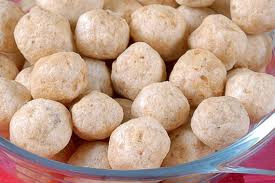 |
Tarian Bajau
|
 |
Bajau
|
The Bajau people are the second largest indigenous group in Sabah is the Bajau, a collective term for a predominantly Muslim people and their kindred groups. Originally seafarers, there are now two distinct groups, the East Coast Bajau and West Coast Bajau. The West Coast Bajau have now settled down around the Kota Kinabalu to Kota Belud areas and have learnt the art of farming and cattle rearing. They are the famous cowboys of Sabah. Their skills in horsemanship are well known locally and on festive occasions both horses and riders are dressed in colourful costumes. On the east coast however many of the Sea Bajaus still live in the traditional way. Fishing is the main activity. While many have settled on land or in water villages, some are still nomadic boat dwellers. The Bajau are skilled fishermen though there are linguistic and culture differences between those living on the West Coast are predomonaatly farmers and the Bajau, well known for their skilled horsemanship, have been dubbed "cowboys of the east". They are expert "horsemen" rearing ponies, buffaloes and cattle as well as on festival occasions respledent in their colourful costumes riding brightly decorated ponies.
Bajau also commonly known to westerners as "Sea Gypsies," the highly mobile Bajao or Sama Dilaut actually live in small groups as far north as the northern tip of Luzon in their house boats called lepa. The true Bajao are actually a Bornean people, but the Sama Dilaut are often called that by other locals because of the similarity of their lifeways; their language, however, is considerably different. The Bajao have also adapted to Jama-Mapun-style houseboats over shallow seas; these are linked together by small bridges. Interiors of houses are not partitioned, and their most notable ornamentation is a hanayan, or ornate shelving. Like other Sama peoples, the Bajao are a non-aggressive group who take flight in their boats when threatened; they claim to have no weapons. The lepa is a beautiful boat of ancient origins; its sail has a "mouth" which enables the boat to sail almost directly into the wind.

.jpg)














